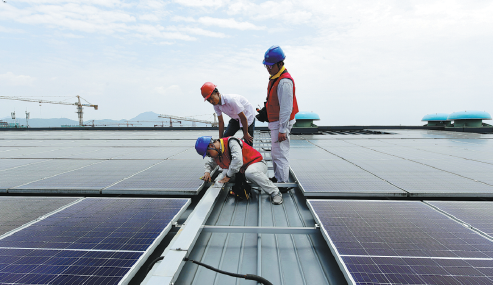New buildings invested by the government are required to incorporate solar power systems in the design and construction process to be approved and commissioned, said the Development and Reform Commission of Wuhu, a city in China’s Anhui province.

Except for new government buildings, the city also stipulates that new, renovated and expanded industrial buildings with a single roof area of over 1,000 m2 should install solar power systems, except that the rooftops are designed for other purposes.
Newly built, renovated and expanded public buildings that have a single roof area of over 500 m2 are also required to incorporate solar.
Residential new buildings with available installation conditions are encouraged to install solar systems.
Existing public buildings owned by government institutions and municipal state-owned enterprises are recommended to install distributed solar systems to set an example for the other sectors. When rooftop reinforcement or transformation are needed to incorporate solar, compensation will be given to the institution or enterprise.
Wuhu is among the many cities that have put forward similar regulations in response to the central government's push towards renewable energy.
In April, the General Code for Building Energy Conservation and Renewable Energy Utilization previously issued by the Ministry of Housing and Urban-Rural Development of China came into force.
The General Code requires energy conservation design on new, expanded and reconstructed buildings and the installation of solar power systems on all new buildings.
In March 2022, the Ministry released the Building Energy Conservation and Green Building Development Plan for the 14th Five-Year Plan Period, which pointed out that by 2025, China should complete the energy-saving transformation for 350 million m2 of existing buildings.
This requires the addition of over 50 GW of building-integrated PV in three years.


